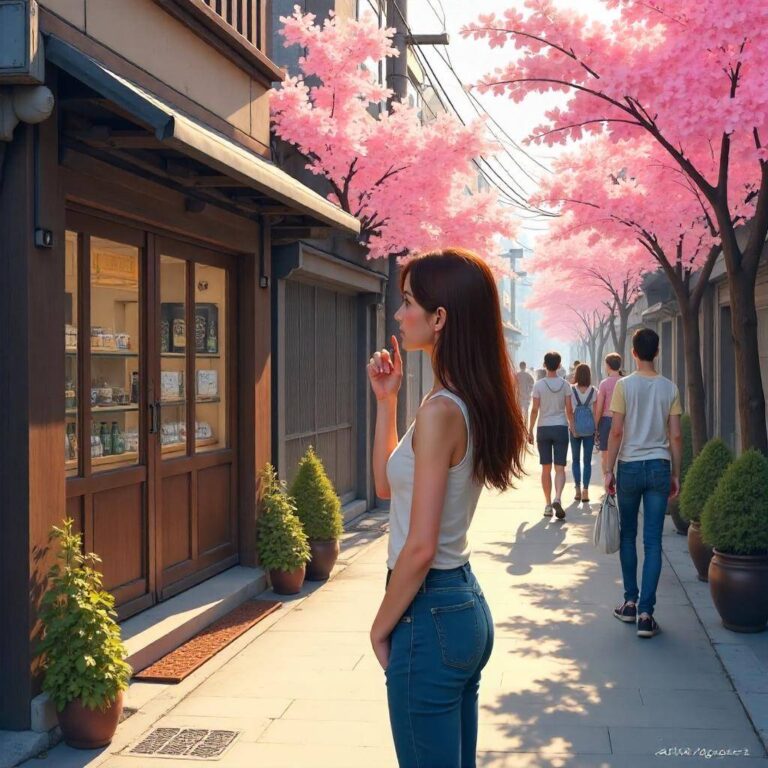Reader’s Question:
Disappointment in Kyoto
My Experience
Recently, I went to Kyoto on a long-awaited school trip that I had been looking forward to since childhood. However, when I actually got there, it was overwhelmingly hot, and I unexpectedly faced
hostility from a foreigner. Even when I looked at the buildings, there were so many foreigners that I couldn’t feel the traditional Japanese atmosphere at all. I had imagined seeing many beautiful Japanese women in kimonos walking around, but instead, it was mostly foreigners. This constant presence made me feel a growing sense of aversion whenever I saw them.
Current State of Japanese Tourist Spots
Is this how all tourist destinations in Japan feel nowadays?
Exploring Kyoto: A Journey Through Culture, Crowds, and Personal Reflection
A Long-Awaited Dream
Hey there, fellow travel enthusiasts! So, I want to share something that’s been on my mind since my recent trip to Kyoto—a place I’ve dreamed of visiting since I was a kid. I pictured myself wandering through ancient streets, surrounded by the serene beauty of traditional wooden houses, maybe even spotting a few lovely women in kimonos. But, as life often goes, reality didn’t quite match the dream. Let me take you through my experience and exploration of Kyoto and share my thoughts on what it means for a tourist destination to feel “authentic.”
Melting in the Heat
First things first, let’s talk about the weather. Oh boy, it was a scorcher! Imagine stepping out of your hotel, ready to take on the day, only to be greeted by a wall of heat that hits you like a ton of bricks. Kyoto in the summer is no joke. I found myself sweating in places I didn’t even know could sweat. The heat has a way of sapping your energy, making you feel a bit cranky, and wishing for just one cloud to give you a break. You know how they say to dress for the destination? Well, here I was, decked out in a cute, albeit heavy, outfit, thinking I’d channel some historical figure with my fashion choices. Instead, I felt like I was in a sauna. Pro tip: if you’re visiting Kyoto in the summer, pack light, breathable clothes—and maybe a portable fan. Trust me on this one.
The Foreign Factor
Now, here’s where it gets a bit complicated. I had anticipated seeing beautiful Japanese landscapes and traditional culture, but I was hit hard by the reality of how tourism has transformed these places. There were so many foreigners (yes, I know, I’m one of them), and at times it felt like the charm of the old city was overshadowed by the sheer number of tourists milling about. It’s like I was stuck in an international melting pot, and I craved a little more of that Japanese essence. I remember standing in front of Kinkaku-ji, the Golden Pavilion, trying to capture the perfect shot. Just as I was about to hit the shutter button, a group of tourists bumped into me—not even a muttered apology. It was just one of those little moments, you know? I felt a wave of frustration wash over me. I had come to marvel at this iconic structure, and all I could think about was how difficult it was to find that elusive peace and tranquility. And let’s talk about that bit of hostility I faced from a foreigner. Somehow, I ended up in a minor scuffle over a shared bench, and while it was minor, it left a sour taste in my mouth. I couldn’t shake off the feeling that sometimes travelers forget we’re all here for the same reason: to experience and appreciate a different culture.
Where Are the Kimonos?
I’d envisioned Kyoto as a place where women in colorful kimonos would glide gracefully through the streets. I imagined them as symbols of the past, connecting me to the rich history of Japan. Instead, I saw a few here and there, but they were often overshadowed by the throngs of visitors in casual summer attire. It made me wonder: Is it too much to ask for a little authenticity? Does everyone have to wear shorts and flip-flops while traipsing through a UNESCO World Heritage Site? I know, I know—everyone deserves to be comfortable while traveling. But there’s something about dressing the part that enhances the experience, right? Here’s another thought that crossed my mind: cultural appropriation. I’ve seen many tourists renting kimonos for photoshoots, which is great for the Instagram feed but doesn’t always come with an understanding of the cultural significance behind the garment. It made me question if that beautiful image of a woman in a kimono is diluted when it’s worn for a photo op rather than with respect for its history and meaning.
Are All Tourist Destinations Like This Now?
So, back to the question: Is this how all tourist destinations in Japan feel nowadays? The short answer is: kind of, but it really depends. Japan is a popular destination, and cities like Kyoto, Tokyo, and even Osaka have become bustling hubs filled with both international visitors and local tourists. You might feel overwhelmed by the crowds at times, and there’s a risk of losing that authentic connection to the culture. But—and here’s the good news—there are still hidden gems waiting to be discovered, places where you can soak in the true essence of Japan without the tourist trap vibe. For instance, consider venturing out to the outskirts of Kyoto. Places like Arashiyama, while still popular, can offer a more serene experience, especially if you wander off the beaten path. The bamboo groves, with their whispering stalks and dappled sunlight, are worth the trip. And if you can manage to go early in the morning or later in the evening, you might just find a quieter, more magical atmosphere. I found myself lost in the little streets of Gion, where the charm of old wooden buildings still lingers. Yes, there were tourists, but if you step into a tea house or a small shop, you can still connect with the local vibe. The energy shifts when you’re inside, away from the busy streets, and suddenly it feels like you’re part of something special.
Finding the Balance
At the end of the day, my experience in Kyoto was a mixed bag. Yes, it was hot and crowded, and I had my moments of frustration and disappointment. But I also had moments of awe, where I was completely blown away by the beauty around me. The gardens, the temples, the food—oh, the food! If you haven’t tried matcha ice cream yet, what are you doing with your life? Seriously, it’s heavenly. I realize now that travel is often about balance. It’s not just about ticking off a list of must-see places; it’s about soaking in the experience, the good and the bad. It’s about understanding that every destination is evolving and that sometimes, you just have to embrace the chaos. So, if you’re planning a trip to Kyoto, go in with an open mind. Be prepared for the heat and the crowds, but also keep your eyes peeled for the beauty that still exists. Seek out those quieter moments, take the time to chat with locals, and remember that every tourist is part of the tapestry that makes a city vibrant. In the end, it’s all about how you choose to look at it. Will it be a source of annoyance or an opportunity for connection? I’m choosing the latter, and I hope you will too. Happy travels!



